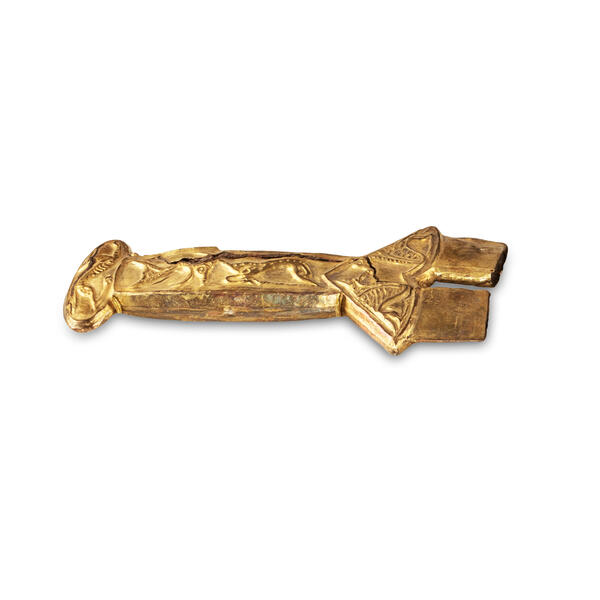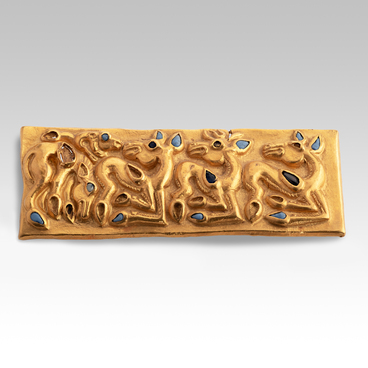The collection of the Rostov Regional Museum of Local Lore contains finds from the kurgan complex “Five Brothers”, specifically, kurgan No. 8. It was excavated in 1959 near the Yelizavetovskaya village (stanitsa).
More than one thousand artifacts made of gold and silver were discovered in this burial, including jewelry, parts of horse harnesses, weapons, and silver ceremonial vessels. Judging by the grave goods, an individual of a high social standing was buried there. In popular scientific literature, this wealthy burial has been referred to as the “tomb of a Scythian king”.
The kurgan was nine meters tall and 62 meters in diameter. Underneath the kurgan a burial chamber was uncovered, which consisted of a stone crypt measuring more than 18 square meters. A dromos, approximately 15 meters in length, led to the crypt from the west. A dromos is a pathway or corridor that leads to a burial chamber in a tomb or kurgan.
The tomb was a rectangular chamber measuring 6.05 by 6.14 meters. The burial chamber and its dromos were covered by a layer of oak logs. On top of these logs, another layer of reeds was placed. The dromos was sectioned off into compartments by transverse stone walls. The dromos and burial chamber were connected by a doorway. The floor of the tomb was paved with slabs of shelly limestone, on which a reed mat was laid. The walls of the tomb were 1.75 m high and were constructed from rough-hewn sandstone blocks. The thickness of the walls was up to 1.3 m. Two individuals were buried in the tomb.
The akinakes displayed in the museum was also found in the grave. The scabbard features gold decorations with a relief pattern.
The sword has a double-edged iron blade and a straight grip. The pommel and the grip are embellished with gold plates. These plates are embossed and consist of two halves that are soldered to the sides of the handle. On either side of the decorations on the pommel, there is an image of a running dog in relief.
The grip features a deer with antlers that point towards the pommel. There are two griffin-like creatures sitting opposite each other in a typical heraldic attitude (position) on the guard.



